OFFUTT AIR FORCE BASE, Nebraska — Workers here are entering the final stretch of a massive, 18-month renovation to a runway that had dangerously deteriorated after 70 years under the weight of military jets.
On a recent visit to Offutt, home to some of the Air Force’s most niche airborne reconnaissance missions as well as U.S. Strategic Command headquarters, Air Force Times toured the vast construction site where the nearly 12,000-foot landing strip is starting to take shape.
“It’s a noticeable difference, just looking at what’s here right now,” said Maj. Jon Adams, the project’s incoming deputy director, as he peered out at the mess of rock heaps and upturned earth beside steamrollers and two-hour-old pavement on April 25. “It’ll be really nice to have it back.”
RELATED
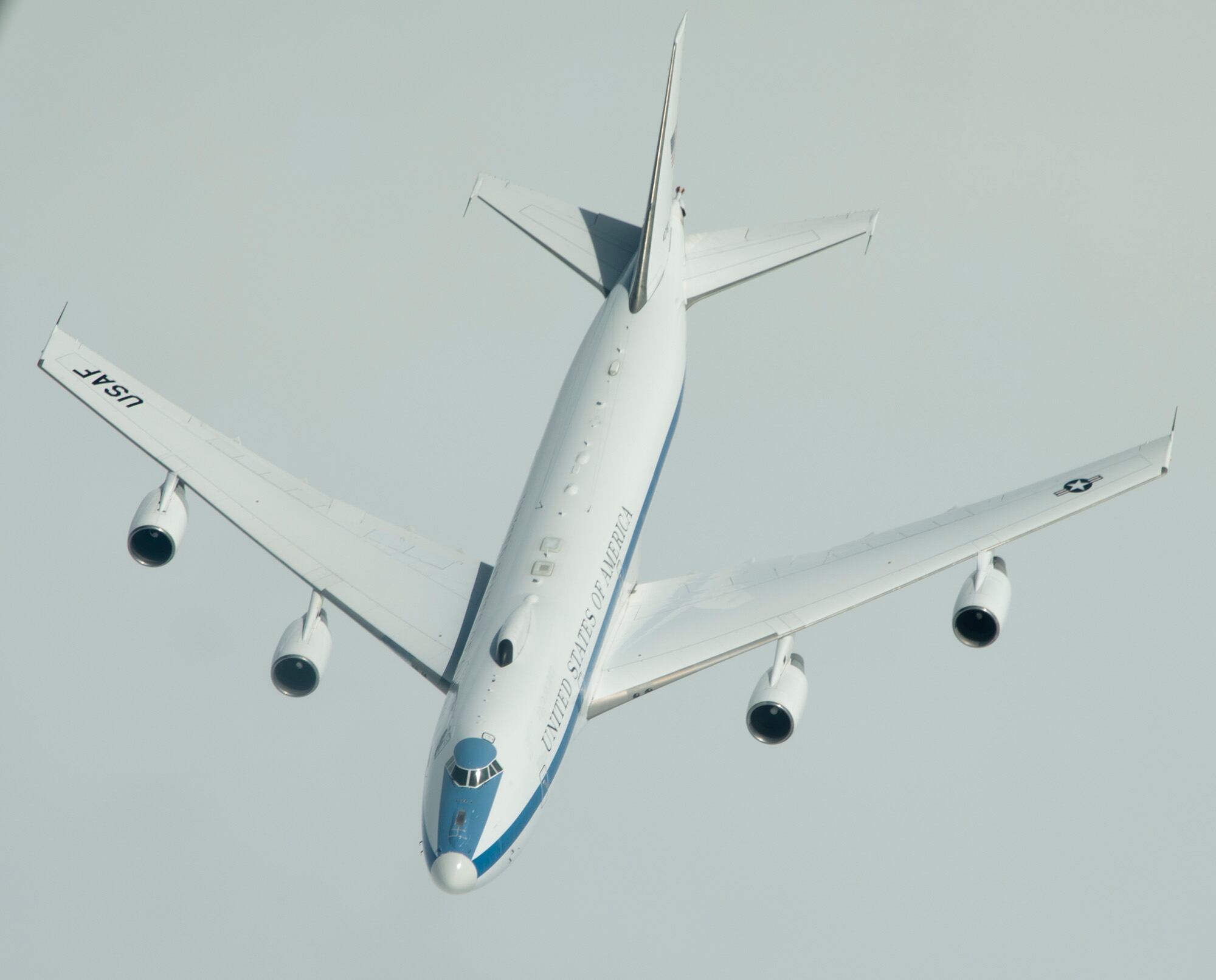
The project began in March 2021 and is likely to wrap up in September or October. The $217 million price tag includes related expenses, such as leasing interim space for the 55th Wing and other units at Lincoln Airport, about an hour away.
Offutt is one of just a few Air Force runway projects currently underway, and the service’s only full runway replacement right now. It’s about 30 years overdue.
“When we do a concrete project, we say it has a 40-year life,” Rob Hufford, Offutt’s construction management chief, told Air Force Times. “We were approaching 70 on this one.”
Annual maintenance and major repairs grew more expensive each year, and the base was spending more on emergency fixes than it was on routine upkeep. The patchwork repairs became a time sink and led to an uneven surface.
RELATED
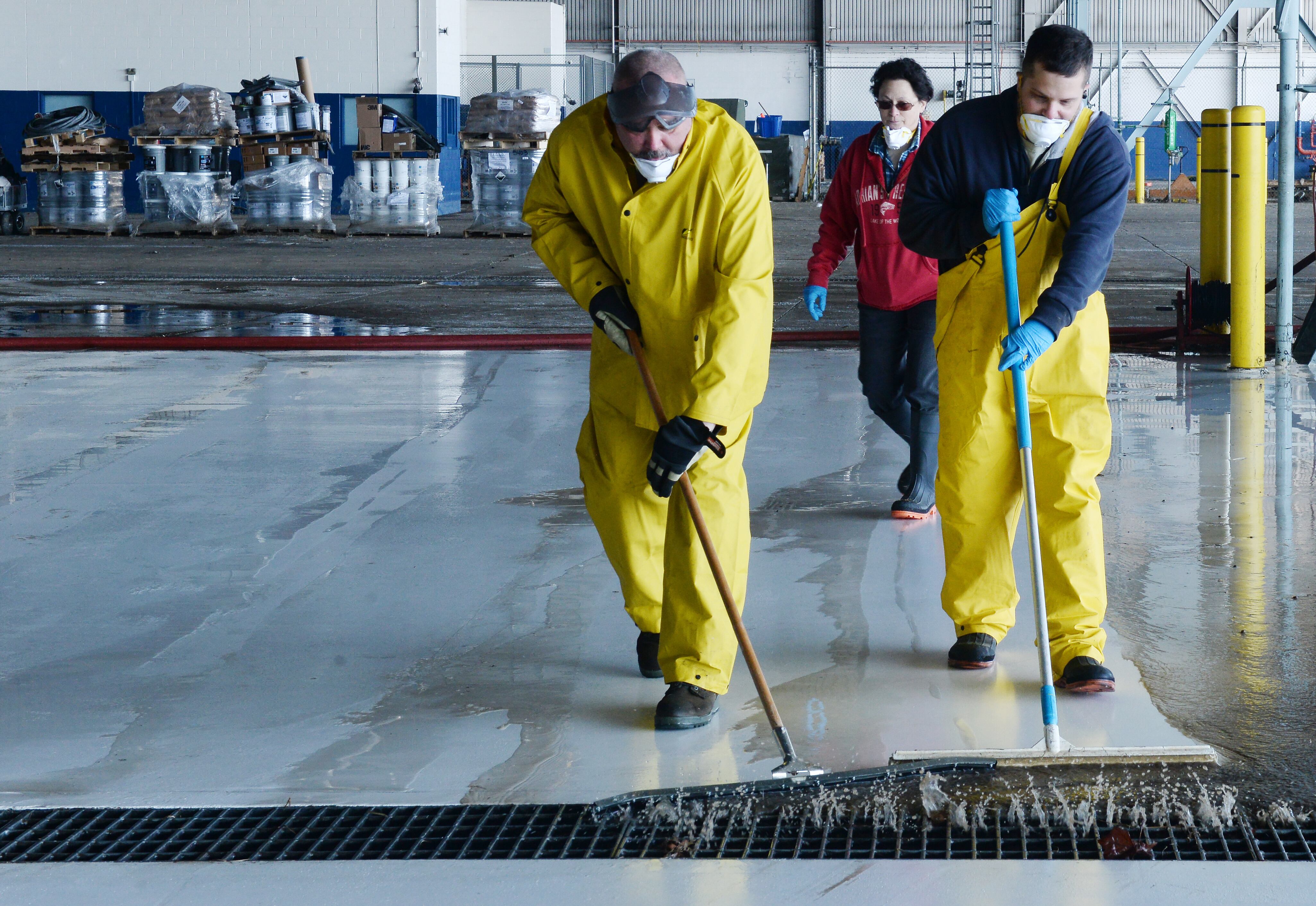
“The concrete was just falling apart,” Hufford said, creating smaller chunks that could get sucked into an engine, pop a tire or dent the fuselage of a jet like the RC-135 Rivet Joint.
It was in such poor condition that aircraft from other bases would avoid landing at Offutt, Adams said.
The plan to tear up around 575 acres, or 25 million square feet, of southeastern Offutt to redo the flightline was already in motion in March 2019, when rapidly melting snow caused the Missouri River to overflow its banks, flooding one-third of the base. More than a half mile of runway was submerged, but it remained intact and its replacement has stayed on track.
“We were in the middle of design when the flood hit, and we were physically in the middle of some soil sampling when the floodwaters crested,” Hufford said. “We had a team of engineers that were out there, boots on the ground, taking samples and they had to stop and leave.”
RELATED
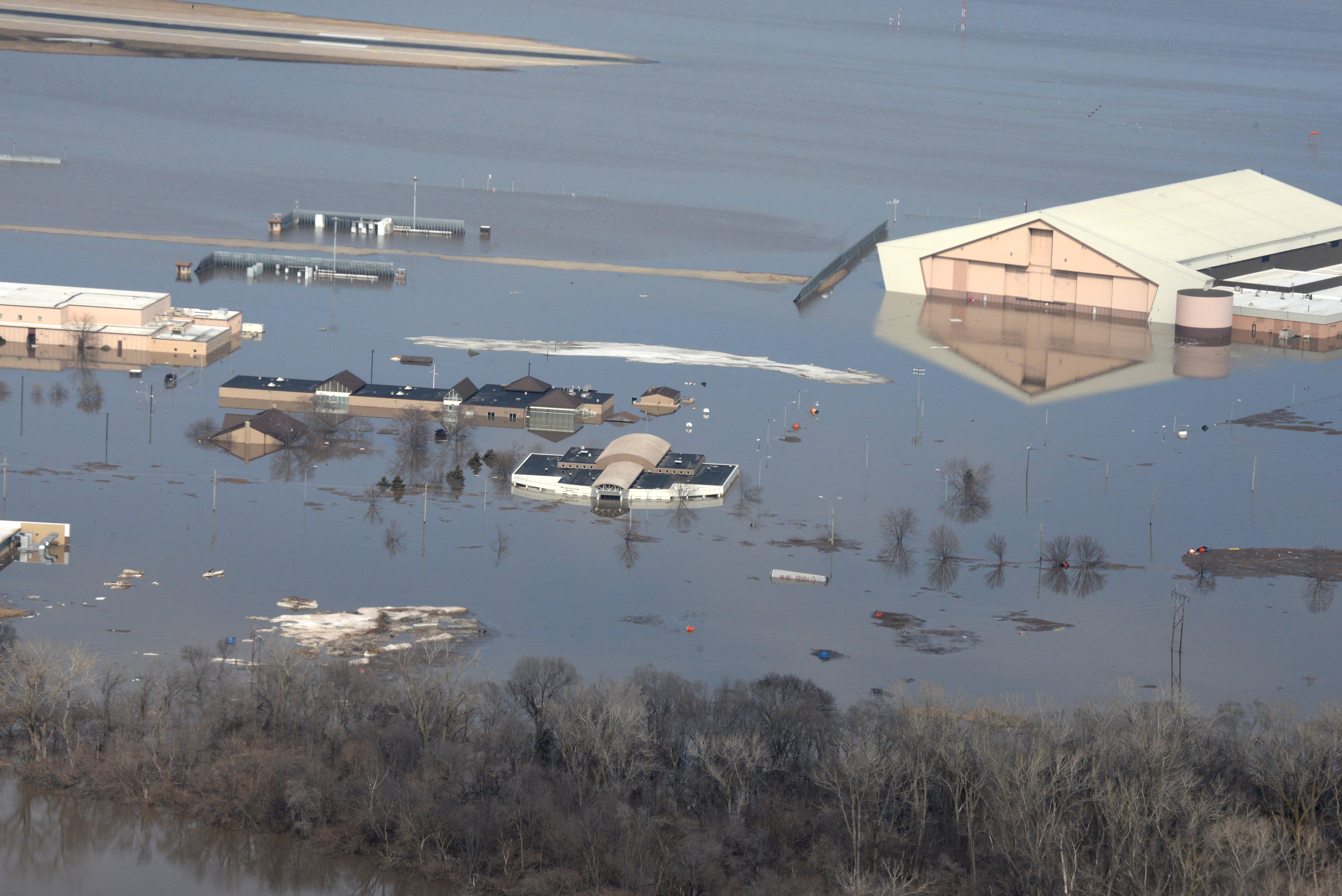
It’s not your average street paving.
The mix used for the pavement is stronger and stiffer than that of a highway, underlaid by a layer of sturdy red rock, Hufford said. It’s also porous so that water doesn’t pool inside and cause cracks when it freezes in the winter.
A 19-inch-thick layer of concrete protects the spots where nearly 200,000-pound airplanes most strain the runway during takeoff, landing and turning. Adding asphalt in other places makes the runway cheaper and easier to maintain.
In addition to making the runway itself, construction crews are leveling out the ground around the pavement and raising the end of the runway, which was submerged in the flood. Workers also need to dig up and replace utility lines that cross underneath.
The strip will be 100 feet smaller in width than the original, saving time and money on work like annual maintenance and snow removal. Aircraft hangars, too, are having some pre-planned work done at the same time.
RELATED
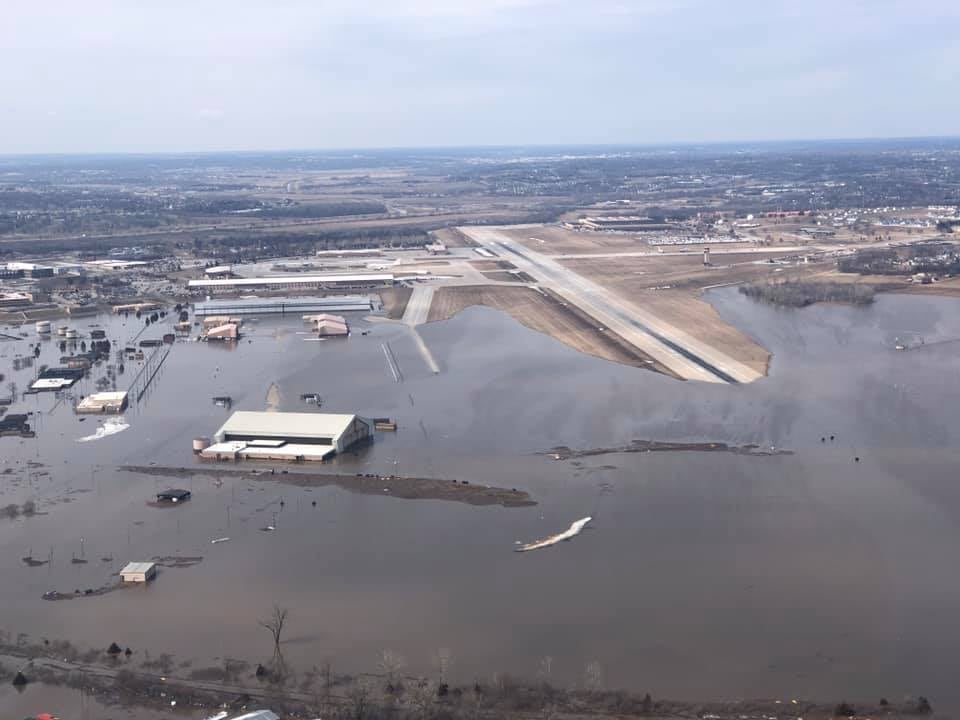
It’s welcome progress for aircrews and maintainers who are tired of making the two-hour round-trip trek from Omaha to their temporary airfield in Lincoln, where they’ve worked for more than a year now.
Some airmen, like security forces and firefighters, stay in the Lincoln area for longer periods of time because of the around-the-clock nature of their jobs.
“We knew it would be a challenge to fully move all of our operations down there,” said Maj. Brian Ross, the program’s deputy director who is tapped to run the office. “But I think overall, it’s going as well as we could have hoped.”
Offutt can park up to 18 aircraft on the Lincoln Airport flightline, about the same as in Omaha. Not all jets are in Nebraska at once because of their overseas workload.
Lincoln offers less than half the hangar space that is available at Offutt, meaning more aircraft are stored and repaired outside and take longer to fix. More planes also have to evacuate ahead of bad weather since there’s less room to shelter in place.
RELATED
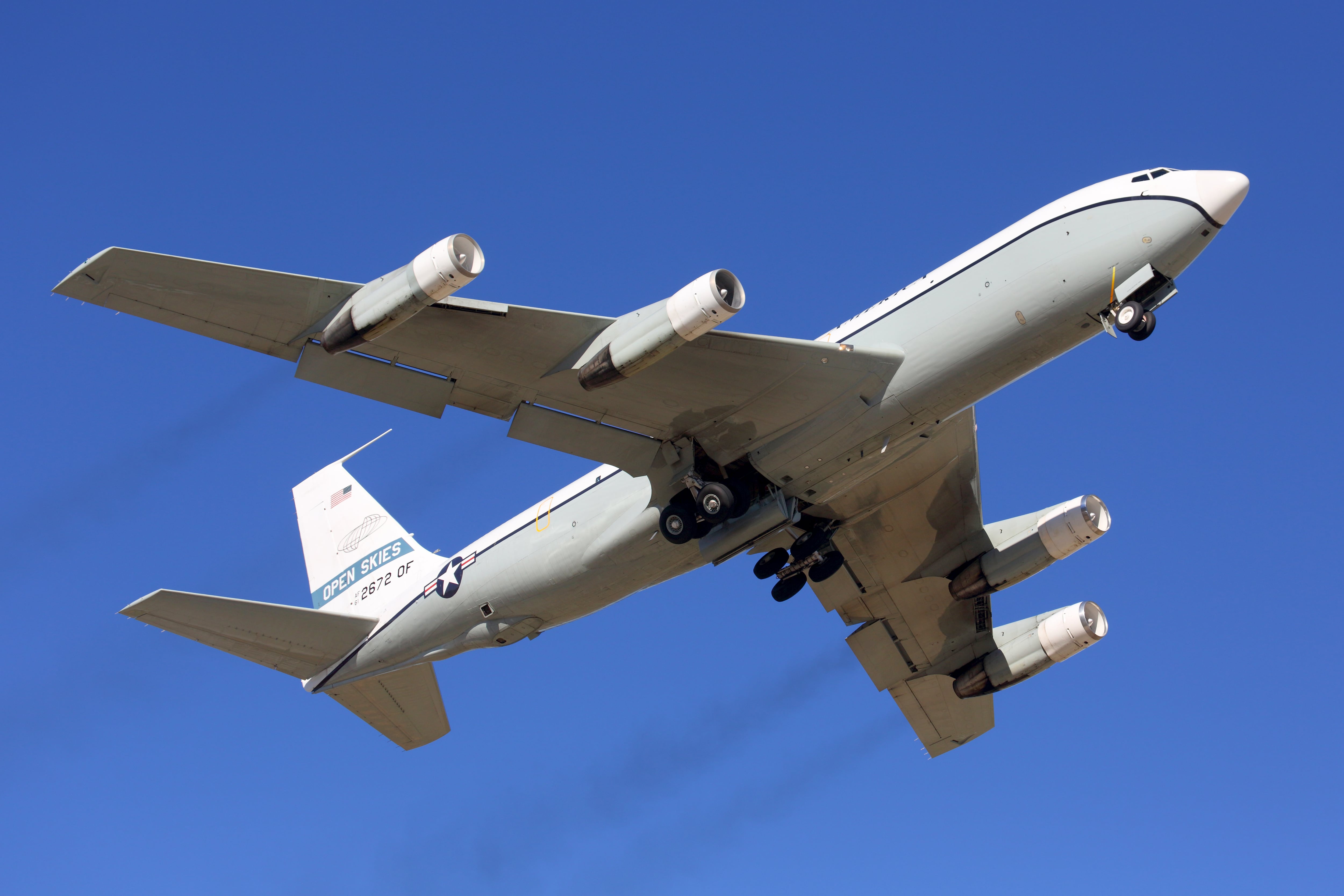
Splitting time between cities is taking a toll on airmen’s personal and professional lives. It’s proven to be one of the runway project’s biggest challenges, complicating matters from childcare to tasks on the jets.
“We’ve got a lot of miles on our trucks,” said Capt. Ryan La Rance, a communications control officer on the E-4B “Doomsday plane” based out of Offutt. “You’ve got travel time, and then you’re like, ‘Oh, man, I forgot this piece of equipment.’ You have to drive all the way back and come back out.”
Still, La Rance said, Lincoln Airport is hospitable to its visitors and has made sure they have the essentials for flight. It helps that the Nebraska Air National Guard’s 155th Air Refueling Wing regularly flies its KC-135 Stratotankers out of the airport, too, and can share some resources with the Offutt units.
Project officials are glad to see a light at the end of the runway nonetheless.
“Having an end in sight and seeing all this concrete go down here, the asphalt especially … is actually doing a big service of getting folks to see that finish line,” Ross said.
Rachel Cohen is the editor of Air Force Times. She joined the publication as its senior reporter in March 2021. Her work has appeared in the Washington Post, the Frederick News-Post (Md.), Air and Space Forces Magazine, Inside Defense, Inside Health Policy and elsewhere.




